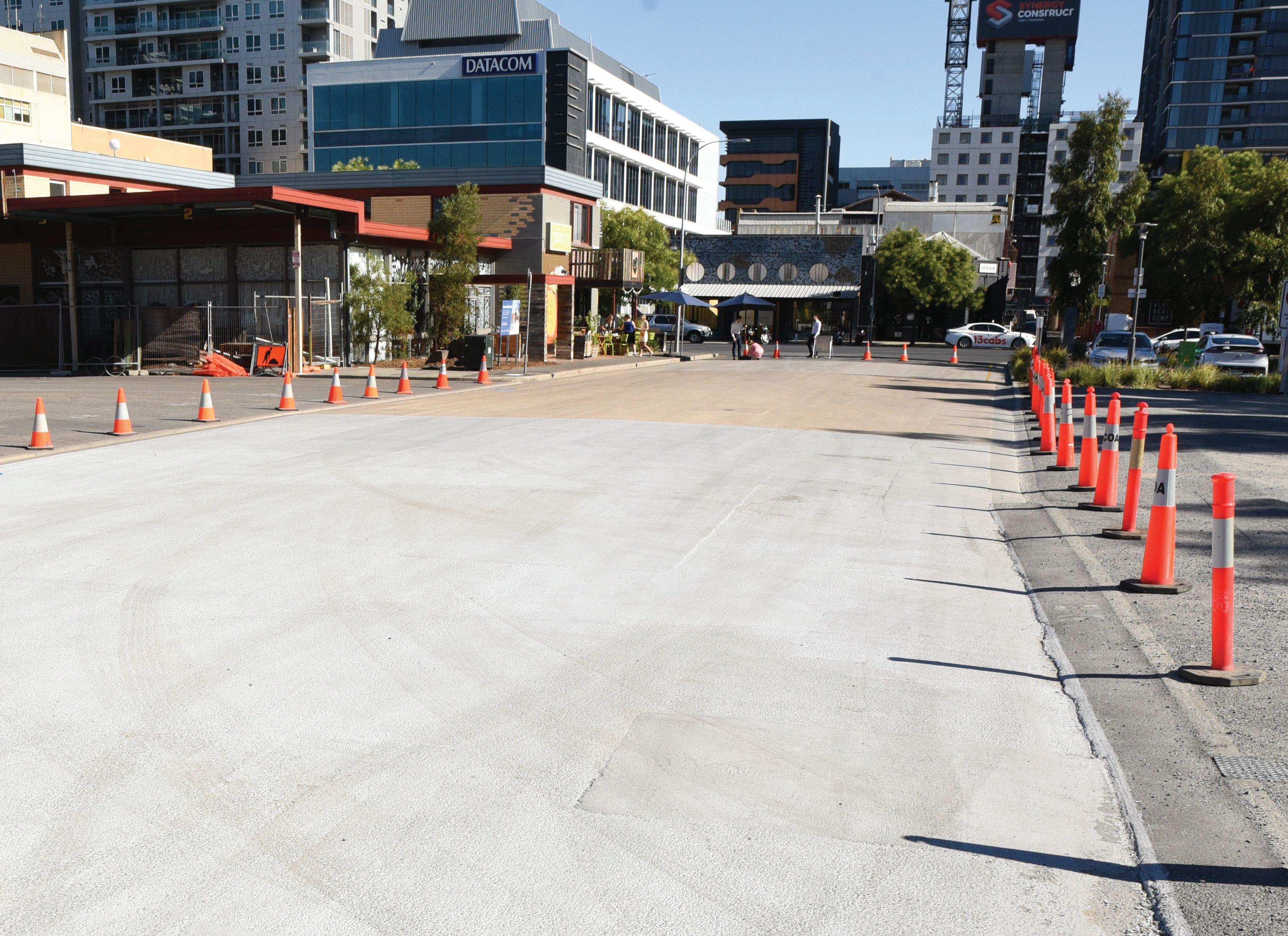
2 minute read
FEATURE - PROJECTS
Trials tracking ways of keeping Adelaide cool this Summer
Innovative road seal products to keep roads cooler during the warm weather are being trialled at various locations across Greater Adelaide. It has been identified that during warm weather traditional dark pavement holds a significant amount of residual heat that can heat up surrounding neighbourhoods.
The City of Charles Sturt in the western suburbs currently has a trial in progress from December 2018 to December 2020. Four streets, a tennis court, basketball court and a (redundant) car park have been painted with CoolSeal, a water-based asphalt emulsion seal coat that colours the surface light grey to reflect the sun’s UV rays.
Thermal cameras and thermometers are monitoring differences in heat experienced during the trial. The City of Salisbury also has a trial of CoolSeal underway. Meanwhile, the Cool Road Adelaide project is being carried out in the CBD where three treatments have been applied to a 100-metre section of Bowen Street West. The products, all seal coats, are CoolSeal by Super Sealing, and JetCool and JetBloc by Fulton Hogan.
It is a Climate KIC Australia project delivered in partnership with the City of Adelaide ($35,000), the SA Department for Environment and Water ($50,000), and made possible with in-kind support from Fulton Hogan. The treated pilot road is being monitored to see how the different products reduce surface and ambient air temperature, as well as the experiences of local residents, road users, pedestrians and businesses.
At the time of writing, the results are expected by 30 June 2020 and will be shared with local councils to inform future cooling programs across SA. There are also road bitumen suppliers who are currently researching heat reflective bitumen products which may be a product option in years to come.
Climate KIC Chief Executive Officer Christopher Lee said new innovations in heat reflective products are being used across the globe, with cool roads and cool roofs taking off in America, Europe and in other countries.
“Given South Australia’s climate and relatively high temperatures, these innovations are another way to cool Adelaide’s urban environment and create a more liveable city,” he said.
At Adelaide Airport, Fulton Hogan has applied JetBloc on several bays to understand the benefits of lighter coloured pavement applications which absorb less heat and reduce the surface temperatures of runways and aprons. This work adds to the airside irrigation trial being undertaken in partnership with SA Water to demonstrate the ability to cool the local environment through the smart use of water and crops.
Written by John Satterley
A heat mapping tool which assesses how all suburbs are affected on hot days and nights is publicly available online. For more information – Your Say Adelaide.










